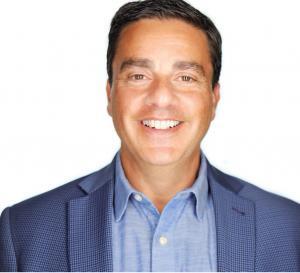Obviously, Bess is not listening intently and probably won’t be asking any clarifying questions. Raoul will either continue to make statements until they are finally heard or fade out to silence. An opportunity to connect and collaborate is lost.
Listening intently is your gateway to communication and, therefore, collaboration. That’s why it’s #1 on the communication hot top 3 list!
Just like Bess, you believe you are listening, yet 75% of the time, you are distracted or preoccupied. It’s not just a technology obstacle. You could be anticipating, judging, assuming, daydreaming, planning, or maybe thinking of that great question you’re going to ask to show how much you are listening . . . oh and you just missed the rest of what the other person was saying.
When that happens, you miss a pivotal moment to connect, and you’ve slowed any momentum of the interaction.
In my former life, I was an unsuccessful professional actor. Why? I now realize it wasn’t my acting; it was my reacting. I wasn’t present. I was thinking of my next line and how I was going to deliver it brilliantly. So many failed auditions and scenes. I wasn’t listening to the other character, so there was never a connection, no truth in the scene. It looked like I was acting!
You may not be chasing the Hollywood dream, but the stakes are still high to be better at listening in business and in life.
Here are some suggestions you can put into practice for your next conversation:
Listen Without Solving
While the other person is speaking, listen with no intent to solve. Listen without interrupting. Don’t ask a question yet. Try allowing yourself to pause before you respond – maybe they haven’t finished their thought? Or they could be in process of solving it on their own.
When you do respond, state:
- What you heard and what you saw.
- What did you hear that was important to them?
- What was their care about they expressed?
Challenge Your Listening
The next conversation you have, challenge yourself to listen on a scale of 1-5.
- Did you make that person feel heard?
- 1- What’s that?
- 5- All in
- Did they feel understood?
- 1- Didn’t seem to care
- 5- Tell me more about that
- Did you add value or make it about yourself?
- 1- Me, Me
- 5- Sounds like it was . . .
“Yes, And . . .”
“Yes, and . . .” is an improvisation foundation. Two actors come on stage, one makes an offer and the other must accept it with “Yes, and . . .” for the scene to move forward with momentum. You don’t have to use the words “yes, and.” It’s a mindset.
The idea is to listen without assuming or dismissing. Before you say “Yes, but . . .” it doesn’t mean you have to agree; is there an alternative you can offer? Surprise yourself and see where this is going. Start big.
Let’s bring back Raoul and Bess; they are planning a holiday work party.
- Raoul: “We should do a potluck.”
- Bess: “Yes, but then it forces everyone to bring something.”
- Raoul: “Okay, um, maybe it’s optional that you have to bring something. I don’t know.”
- Bess: “Yes, but then people will say it’s not fair or there isn’t enough food.”
Let’s pause here. Raoul is working hard here; Bess is saying yes, yet all Raoul hears is “but” and ideas being taken down. This is going to end with another meeting.
Let’s Take 2 with “Yes, And . . .”
- Raoul: “We should do a potluck.”
- Bess: “Yes, and we can set up some options for people to choose from so there’s less pressure on them.”
- Raoul: “Hey, I like that. We can break it down by foods or products.”
Collaboration is happening. Raoul feels understood and safe to continue sharing. Bess is committed to the process.
Listening is not a skill; it is our natural ability.
Stop making statements. Choose to listen with the intention of making the other person feel bigger, not smaller. When they feel heard and understood, they will hear your questions and statements. You’ve got collaboration.
















